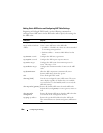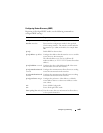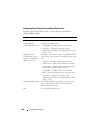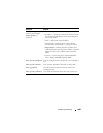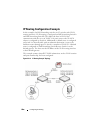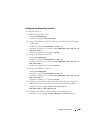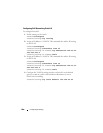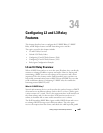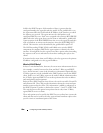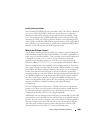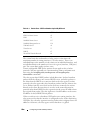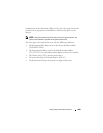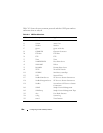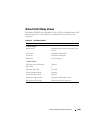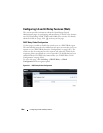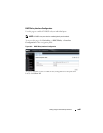
1088 Configuring L2 and L3 Relay Features
fields in the DHCP request. If the number of hops is greater than the
configured number, the agent discards the packet. If the
giaddr
field is zero,
the agent must fill in this field with the IP address of the interface on which
the request was received. The agent unicasts the valid packets to all
configured DHCP servers. Each server responds with a unicast BOOTREPLY
addressed to the relay agent closest to the client as indicated by
giaddr
field.
Upon reception of the BOOTREPLY from the server, the agent forwards this
reply as broadcast or unicast on the interface where the BOOTREQUEST
arrived. This interface can be identified by the
giaddr
field or option 82.
The Dell Networking N2000, N3000, and N4000 series switches DHCP
component also supports DHCP relay agent options to identify the client
interface. If configured, the relay agent inserts these options when forwarding
the request to the server and removes them when sending the reply to the
clients.
If an interface has more than one IP address, the relay agent uses the primary
IP address configured as its relay agent IP address.
What Is L2 DHCP Relay?
In Layer 2 switched networks, there may be one or more infrastructure devices
(for example, a switch) between the client and the L3 Relay agent/DHCP
server. In this instance, some of the client device information required by the
L3 Relay agent may not be included in the DHCP packets sent by the DHCP
client. In this case, an L2 Relay agent can be used to add the information that
the L3 Relay Agent and DHCP server need to perform their roles in address
and configuration and assignment.
Before it relays DHCP requests from clients, the switch can add a Circuit ID
and a Remote ID. These IDs provide information about the circuit and port
number connected to the client. This information is added as suboptions in
the DHCP Option 82 packets as defined in sections 3.1 and 3.2 of RFC3046.
The switch removes this option from packets that it relays from L3 Relay
agents/DHCP servers to clients.
These sub-options may be used by the DHCP server to affect how it treats the
client and also may be used by the relay agent to limit broadcast replies to the
specific circuit or attachment point of the client.



